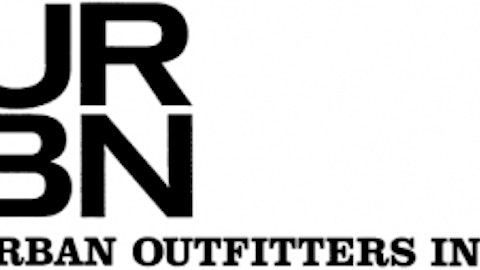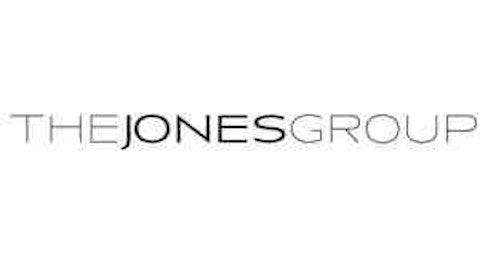The volatility in retailers has been nauseating of late. However, for the deep value investor with a steel stomach, there could be some solid buying opportunities. The major teen retailers have been in a free fall for the past few months, including the likes of Abercrombie & Fitch Co. (NYSE:ANF), American Eagle Outfitters (NYSE:AEO) and Aeropostale, Inc. (NYSE:ARO).
Over the past year, both American Eagle Outfitters (NYSE:AEO) and Aeropostale, Inc. (NYSE:ARO) are down over 30%, yet Abercrombie & Fitch Co. (NYSE:ANF) is relatively flat.

For now, you can blame the hipsters and value-seeking teenagers who are running to Forever 21 and Urban Outfitters for their clothing needs. This has caused the recent quarter to be abysmal for the three A-retailers.
Same-store sales fell off a cliff for all three, and inventory growth outpaced sales. When inventory growth outpaces sales growth, it’s almost always bad news for retailers. For the second quarter, Aeropostale, Inc. (NYSE:ARO)’s inventory was flat year over year, but sales were down 6%. American Eagle Outfitters (NYSE:AEO) saw inventory levels flat as well, but sales were down 2%. Meanwhile, Abercrombie saw inventory up 2% year over year, but sales were flat.
Earnings told a similar story, all seeing year-over-year declines in EPS. Aeropostale, Inc. (NYSE:ARO) posted a $0.34 loss, whereas it broke even last year. Same-store sales were down 15%. Abercrombie & Fitch Co. (NYSE:ANF) posted second quarter EPS of $0.14, versus $0.20 for the same period last year, while same-store sales were 10% lower. American Eagle Outfitters (NYSE:AEO) had second quarter EPS of $0.10, compared to $0.21 last year, and same-store sales were down 7%.
Never fear
With retail data coming out every month, versus quarterly for the majority of other sectors, overreactions are not uncommon in the apparel business. And when an overreaction happens, you should ask two questions; is management competent? Will the company survive? If the answer is yes and yes, then it’s generally safe to invest.
That’s why I’m excited about the recent pullback in Aeropostale, Inc. (NYSE:ARO). No debt, strong cash position, and it’s generating free cash flow that’s twice its net income. The overreactions at Aeropostale are becoming more and more intense. In the past three years alone, there have been four large sell-offs.

Source: StockCharts.com
However, the following surge in the stock is becoming more and more intense. During the latest pullback in 2011, the stock bottomed out around $9.60, and then the stock soared more than 100% over the next six months.

Over the past decade, Aeropostale has offered investors solid returns. Sure, it has missed a season, but this has historically proven to be a great time to buy. From 2004 and up to 2012, Aeropostale, Inc. (NYSE:ARO) enjoyed returns on invested capital between35% and 60%. Up until the the recent pullback, Aeropostle had outperformed its major peers over the last eight years.

Sales at Aeropostale are still robust, generating revenue at decade highs of close to $2.4 billion over the trailing 12 months. The recent issue is related to margin pressure. Cost-cutting and more aggressive overhead management should get margins back in line for next season.
Aeropostale believes its sweet spotrevolves around teens between the ages of 14 and 17. The company has been making key changes to add diversity to its apparel mix. What this entails is focusing on higher average unit-revenue items. The high average unit-revenue fashion segment currently accounts for around 25% of its revenue. These items include the likes of shoes and outerwear.
Management
And management? It appears to be competent for Aeropostale. Glassdoor, the workplace review site, has Aeropostale CEO Thomas Johnson’s approval rating at 86%, while Abercrombie’s CEO is at 36% and American Eagle’s CEO is at 86%. Johnson has been at Aeropostale for almost a decade. Part of the reason Mike Jeffries’, Abercrombie & Fitch Co. (NYSE:ANF) CEO, rating is so low is that he is no stranger to controversy, purposely limiting the size (no XLs) of the clothes in his store to be sure to attract “good looking” people.
Valuation
Historically, the three A-retailers have all traded in line on a P/S basis, but you will notice a vast divergence that began in late 2010. Today, Aeropostale trades at less than 0.2 times revenue.

This marks one of the lowest points the stock has traded from a P/S basis over the last decade. Since 2002, Aeropostale’s average price-to-sales multiple has been 1.1 times.
The holiday season could be a game changer for teen retailers, assuming they can manage to bring to market new products to get customers back into stores. Valuations have been compressed to the point where the slightest sign of a turnaround could propel the stock.
While I think, Aeropostale presents the best opportunity from a valuation perspective, Abercrombie & Fitch Co. (NYSE:ANF) has four key brands, which, in part, allows it to operate across a broader part of the retail spectrum. Its key brands include Abercrombie & Fitch, Abercrombie kids, Hollister, and Gilly Hicks. As a result, the retailer has held up much better than its two peers.
While Aeropostale, Inc. (NYSE:ARO) is turning to its apparel mix to improve operations, Abercrombie & Fitch Co. (NYSE:ANF) has international plans, looking to expand in Europe and Asia. Flagship Abercrombie & Fitch stores will be opened in Seoul and Shanghai this year.
Bottom line
One of the reasons I like Aeropostale is that it has no debt and over $100 million in cash ; that means cash covers 15% of its market cap. With a slight turnaround in margins, I believe there could be impressive upside. That’s not to say that both American Eagle Outfitters (NYSE:AEO) and Abercrombie won’t reward shareholders, but I think Aeropostale is the one to own.
The article Investing in Apparel Requires a Level Head originally appeared on Fool.com and is written by Marshall Hargrave.
Marshall Hargrave has no position in any stocks mentioned. The Motley Fool has no position in any of the stocks mentioned.
Copyright © 1995 – 2013 The Motley Fool, LLC. All rights reserved. The Motley Fool has a disclosure policy.





